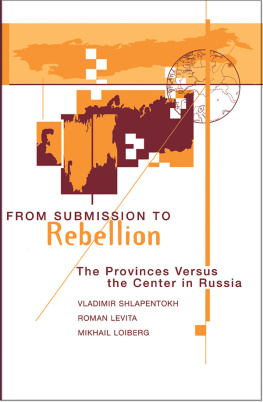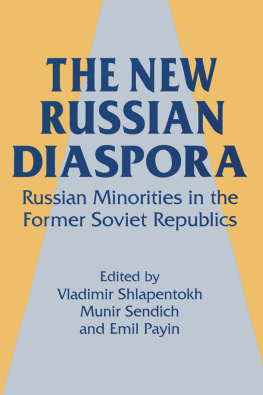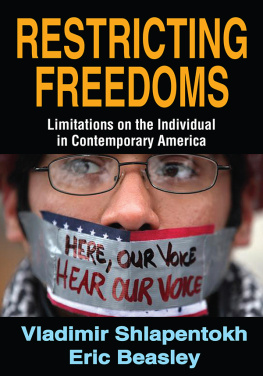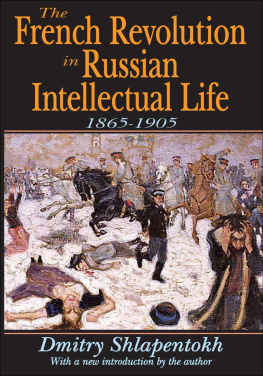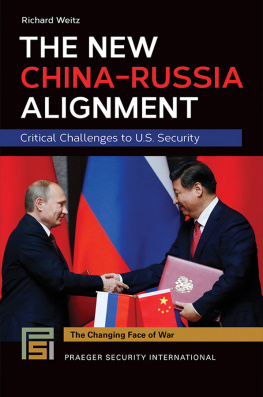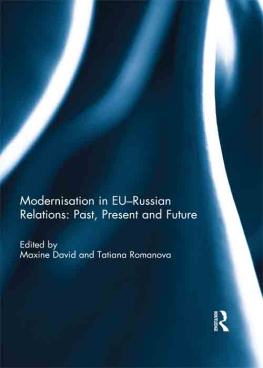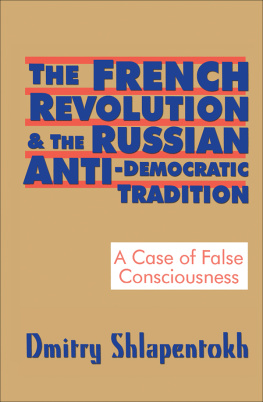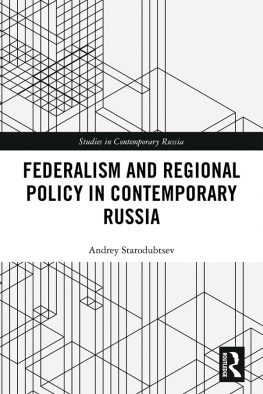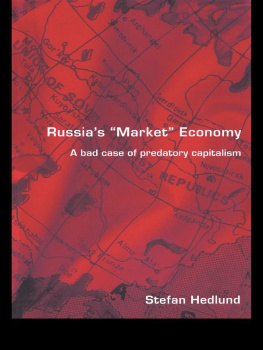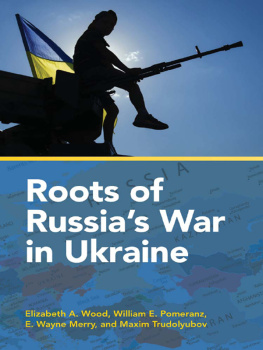FROM SUBMISSION TO REBELLION
FROM SUBMISSION TO REBELLION
The Provinces Versus the Center in Russia
Vladimir Shlapentokh
Roman Levita
Mikhail Loiberg
In memory of our parents: Vera (Ita) Iakovlevna Gurevich-Shlapentokh, Anna Zinovievna Donde-Levita, Iakov Froimovich Levita, Olga Abramovna Loiberg, and Iakov Mikhailovich Loiberg
First published 1998 by Westview Press
Published 2018 by Routledge
711 Third Avenue, New York, NY 10017, USA
2 Park Square, Milton Park, Abingdon, Oxon OX14 4RN
Routledge is an imprint of the Taylor & Francis Group, an informa business
Copyright 1997 Taylor & Francis
All rights reserved. No part of this book may be reprinted or reproduced or utilised in any form or by any electronic, mechanical, or other means, now known or hereafter invented, including photocopying and recording, or in any information storage or retrieval system, without permission in writing from the publishers.
Notice:
Product or corporate names may be trademarks or registered trademarks, and are used only for identification and explanation without intent to infringe.
Library of Congress Cataloging-in-Publication Data
Shlapentokh, Vladmir.
From submission to rebellion: the provinces versus the center in
Russia / Vladmir [i.e., Vladimir] Shlapentokh, Roman Levita, Mikhail
Loiberg.
p. cm.
Includes bibliographical references and index.
ISBN 0-8133-2156-5 (hc.). ISBN 0-8133-2157-3 (pbk.)
1. Federal governmentRussia (Federation) 2. RegionalismRussia
(Federation) 3. Russia (Federation)Politics and government.
I. Levita, R. (Roman) II. Loiberg, M. IA. (Mikhail IAkovlevich)
III. Title.
JN6693.5.S8S55 1997
320.80947--dc21
96-53283
CIP
ISBN 13: 978-0-8133-2157-8 (pbk)
CONTENTS
Part One
The Era of the Centers Dominance Before 1985
Part Two
The Center and Regions in Conflict Since 1985
Part Three
The Center and Regions in Confrontation
Part Four
The Effect of Regionalism on Russian Society
Our greatest gratitude goes to Joseph Kupsky for his meticulous and ingenious editing of this manuscript and to Tatiana Chowdhury for her immense help in checking and rechecking numerous references. A special thanks to Michele Wynn, Joshua M. Woods, Professor Vladimir Zolotykh (from Izhevsk University, Russia), and also a special thanks to Varlen Soskin, whose paper on Siberia has been used. If this text still contains errors, it is the authors fault.
We also extend our heartfelt thanks to several Russian sociologists who shared their data with usYurii Levada, Vladimir Shubkin, and Elena Avraamova, among others.
Vladimir Shlapentokh
Roman Levita
Mikhail Loiberg
1
INTRODUCTION
In 1991, as a result of complicated processes, Russia lost its empire and had to acquiesce in the transformation of its national republics into independent states. Millions of Russians bemoaned the end of their empire, but other concerns emerged almost immediately: Would Russia follow the fate of the Soviet Union and be transformed into either a loose confederation of several dozen regions or a much smaller entity? Was it possible that the current Russian Federation could return to the former size of Moskovia, the predecessor of the current Russian state that existed four to five centuries ago?
In order to make predictions about Russias future, we have investigated the relationship between the center and provinces throughout Russian history, from the emergence of the Russian state to modern times. In this book, we approach this extremely difficult issue from a very broad perspective, looking at developments in Russia as a case study of the relations between the center and the periphery in general.
Indeed, the study of the relations between the center and periphery (referred to here as CP relations) is one of the most important characteristics of any complex system, whether it be social, biological, or mechanical in nature. In the social sciences, these relations are of crucial significance for social entities at the micro-as well as the macrolevel.
In speaking of the center, we mean, according to the traditional approach in modern social science, the central administration, including the office of the president and subordinated structures, the government, and Parliament. The term provinces embraces all those territories outside the capital of the country, and they have traditionally played a special role in the life of the country. In many countries, the provinces differ from each other in that their residents sometimes have a different ethnic identity than the majority of the people in the country.
There are three types of states that have different forms of CP relations: the unitarian state, the federation, and the confederation. In the first case, the center has a monopoly on all strategic decisions, including the appointment of the heads of local administrations. In the second case, the provinces have a significant level of autonomy, and the selection of the local elite is essentially managed independently of the center. At the same time, however, the decisions made at the center are binding on the provinces. In the third case, the provinces are the major loci of power, and the central administration is shaped by and represents the interests of the provinces.
As noted, the main objective of this book is to study the CP relationship, using Russia as a case study. Each of the three types of states just mentioned is relevant to Russia. In 1985, only one decade ago, Russia was a strong unitarian state, whereas in the post-Communist period that has followed, it tends to act as a federation. At the time this book was in the last stages of preparation in late 1996, there was also a serious internal movement to transform Russia into a confederation in the near future.
We investigate here the relationship between the center and provinces during different stages of Russian history, with special focus on post-Communist Russia. As we progress through the book, we study how historical traditions, on the one hand, and the new market economy and democratization, on the other hand, will shape the major trends in these relations for the coming decades.
Regionalism, however, is not only a dependent variable. It is also a powerful independent variable that exerts tremendous influence on all aspects of social, economic, and political life. In this book, we devote a great deal of attention to regionalism in both of its roles.
In our analysis of CP relations, we also make the distinction between objective and subjective factors. The globalization of the economy and world communications are objective factors immensely affecting these relations. However, such subjective factors as ideology and public opinion also have a tremendous impact on CP relations and deserve the same amount of attention.
We discuss herein all eighty-nine administrative units of contemporary Russia, often called the subjects of the Russian Federation. However, the main objective of this book is not so much to discuss the non-Russian regionsthe so-called ethnic republicsas it is to investigate the pure Russian regions, for it is in these regions that 80 percent of the population of the Russian Federation lives.

